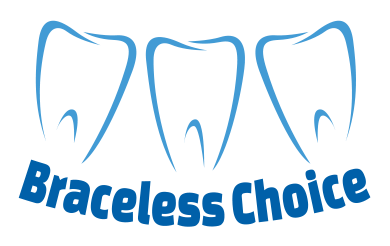So you’ve just found out your child needs orthodontic treatment – and braces are looking like the most likely scenario.
Often conventional orthodontic treatment for teenagers will require some healthy teeth to be removed in order to move teeth into the correct positions in an overcrowded jaw.
However, depending on the age of your child and the underlying problem, there may be other options that are not only less invasive, but considerably cheaper!
Early treatment can help correct small problems before they have a chance to develop into larger issues, reducing or eliminating the need for braces and extractions of healthy teeth later in life. Ideally this diagnosis should happen before a child’s adult molars have erupted (around 7 years old), but even if your child is older than this, early interceptive treatment may still be an option.
Why Avoid Wearing Braces?
Braces can be very effective at moving teeth as conventional braces are fixed onto the tooth surfaces and are continually working to move teeth into the correct positions, but they do have limitations and will not effectively develop the jaws. This is particularly applicable when braces are used following the extraction of premolar teeth. In these cases, braces tend to pull the teeth backwards, creating a smaller upper jaw which can lead to these children developing OSA in adulthood. In addition, this form of treatment will not provide the best facial profile. Treatment with Dr Prokop focuses on helping a child achieve a balanced and attractive facial profile so they can reach their full potential in life.
How Can Oral Behaviours Affect Orthodontic Treatment?
Orthodontic treatment alone cannot correct oral behaviours that could otherwise interfere with orthodontic or dental treatment, or which may affect its long-term stability. The position of the tongue, lips and jaws during rest are extremely important to help ensure normal development and growth of oral structures. For example, if the tongue rests against the back teeth then it could mean these teeth will not be able to fully erupt, and if it rests against the front teeth then it will keep the upper and lower teeth apart, causing an open bite. Tongue thrusting is a very common behaviour but the pressure of this habit can affect the development of the teeth, jaws and facial muscles.
What Alternative Options are there to Wearing Braces?
Dr Mariola Prokop can provide patients with removable appliances, myofunctional appliances, myofunctional therapy or combination of all. Treatment can be as straightforward as using special myofunctional exercises combined with removable appliances that help ensure your child’s tongue is correctly positioned, optimising upper jaw development before growth is completed. This type of therapy is very non-invasive and active treatment may last 12 -18 months.
What is Myofunctional Therapy and How Could It Help?
Myofunctional therapy treats facial muscle imbalances, correcting tongue thrusting habits, incorrect swallowing patterns, thumb sucking and open mouth posture. Specially designed exercises help to strengthen the appropriate muscles and can help aid the normal development of the teeth and jaws.
What about Functional Jaw Orthopaedics?
Functional jaw orthopaedics (FJO) is a process which helps ensure the jaws are properly positioned and are the right size and shape so the bones in the skull will be correctly aligned. FJO is able to treat the teeth and jaws at a very early stage and is sometimes known as “no braces orthodontics.” Specialised techniques are used to manage jaw growth and development, and to correct deformation, providing beautiful, healthy smiles that will give an optimal level of functionality.
Early interceptive FJO can result in life-long benefits which include:
- Increased confidence as a nice smile can significantly boost self-esteem
- Improved profile as facial features will be more in proportion
- Improved tooth and jaw function, reducing the risk of tooth grinding and jaw joint problems, including persistent headaches
- Improved sleep, as painful jaw problems can disrupt sleep patterns
- Improved breathing, as a constricted airway can be opened up by positioning the jaws correctly
- The need for tooth extraction is greatly reduced
When is the Best Time for Functional Jaw Orthopaedics?
This can vary as some medical practitioners will treat a child as early as age two while others will wait until a child is a little older and more able to cooperate. Growth problems such as a narrow jaw are best addressed before the adult teeth erupt.
The best time to start FJO treatment is between 5-9 years. Sometimes certain problems are most effectively treated during a particular growth phase, but if a child’s breathing or swallowing patterns are being affected then it is likely treatment will provided as early as possible.
FJO can be very successful in aligning the jaws and correcting problems with their size and shape, but sometimes braces will still be required to re-position the teeth more fully.

